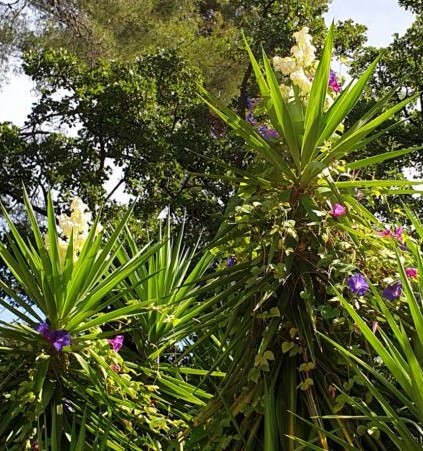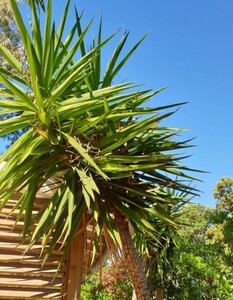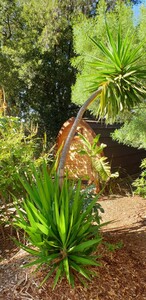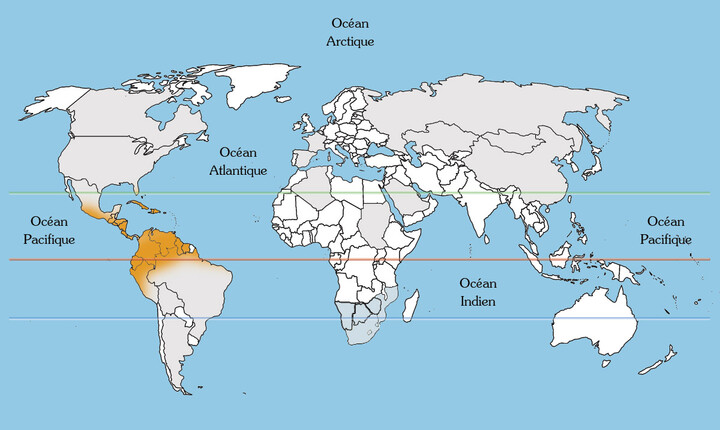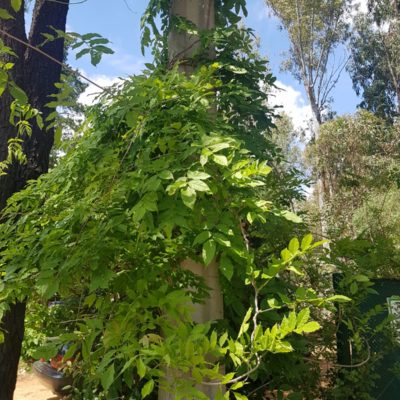Yucca elephantipes (Spineless Yucca)
Presentation
An exotic giant
Yucca elephantipes, or Spineless Yucca, is a remarkable plant native to Central America, renowned for its impressive silhouette and majestic presence in tropical and subtropical landscapes. It is often grown indoors in pots. But as the Var area enjoys a very mild climate, it thrives outdoors at the campsite and in the countless Coins de Paradis ® (Corners of Paradise) you can enjoy exploring during your holiday in the Var, French Riviera-Côte d’Azur.
The Yucca elephantipes is somewhat reminiscent of a palm tree. Several trunks can grow from the main trunk and instead of roots, it has rhizomes. The downward, flared shape and ridged texture of its trunk evoke an elephant’s foot, hence its name!
Solid leaves
The Yucca elephantipes generally blooms in summer, so you will be able to admire it during your camping break at our four-star campsite Les Jardins de La Pascalinette®! Its flowers resemble giant lily-of-the-valley bells and can reach a magnificent height – you can’t miss them!
But beware of its sharp leaves, which dry then form a skirt around the trunk before falling.
The Yucca elephantipes played a major role in the daily lives of certain Central American indigenous tribes, who used its leaves to make rope, baskets and even clothing.
Its pollination system, in which it often interacts with moths, intrigues researchers and underlines the complexities of nature.
Identity
| Latin name : | Yucca elephantipes |
|---|---|
| Family : | agavaceae |
| Genus : | Yucca |
| Species : | elephantipes |
| Color : | Green leaves, cream flowers |
| Origin : | Central and South America |
| Foliage : | Evergreen |
| Port : | Shrub |
| Height : | Up to 15 m outdoors |
| Flowering : | Summer – autumn |
| Location : | "Jardin du parc aquatique" (nr. 8 on the botanical footpath plan). |
Did you know?
In South America, its petals are blanched and eaten with eggs

